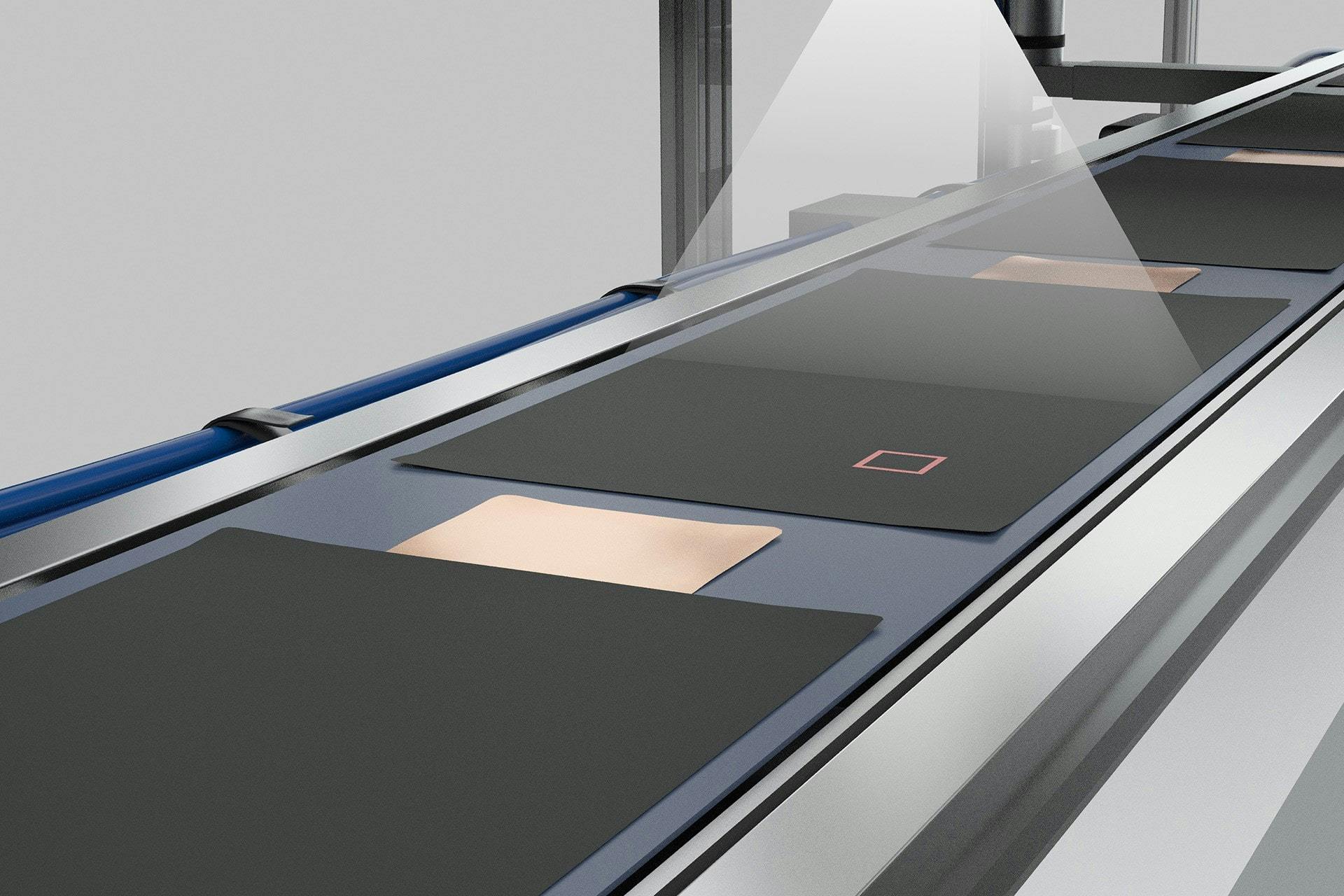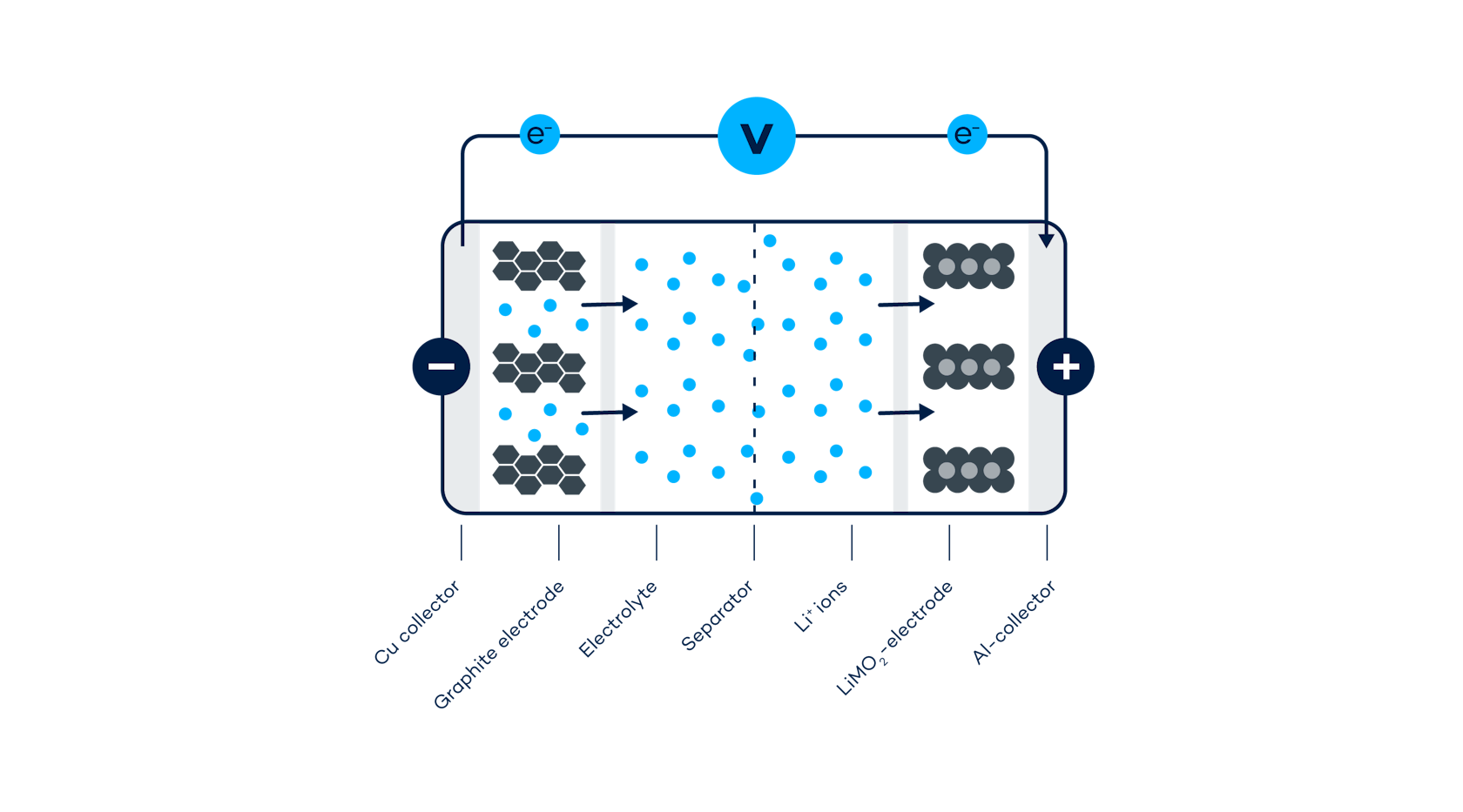Quality assurance for e-car battery cells has been patchy to date; as production numbers increase, this may become a problem. A new particle detection process can help manufacturers increase product quality and eliminate safety risks.

Smart Production Detection of Particles in Li-ion Batteries
A new process enables continuous inline inspection of battery cells in mass production
Micrometer-sized residues in e-car battery cells impair product safety. The more batteries are produced, the more urgent the need to detect such particle contamination while still in production.
Until now, practical solutions for mass production have been sought in vain. This is now changing: A newly developed detection system promises a remedy for this issue. The idea behind the technology is actually simple.
Particle contamination can cause battery fires
Small cause, great impact: this saying applies exactly to particle contamination in lithium-ion batteries. Among other things, the microscopic particles are responsible for the fact that - so far in extremely rare cases - batteries in electric vehicles ignite by themselves. How does this happen?
To explain, let's take a look at the structure of a battery cell. It consists of many wafer-thin, stacked or wound electrode foils: one anode and one cathode each, separated by a separation layer. The spaces in between are filled with electrolyte fluid. When the battery discharge, electrons flow through the contacts from the anode to the cathode; when they are charged, the process is reversed.
Before stacking, the foil pieces are cut into rectangles with a laser; this produces particles - chips or splinters - in the micrometer-size range. Further particles can be generated by abrasion on the transport devices or other mechanical parts in the production line. The impurities are removed by various solutions, such as vacuum or extraction. However, particles occasionally remain on the foils.
If such conductive particles are about 10 micrometers and larger, they can penetrate the 10-40 micrometer thick separators. The lithium ions then take a "shortcut" through the separator: A short circuit occurs. The short circuit can ignite the battery and the flames, which are over 1,000 degrees Celsius, are almost impossible to extinguish.
So far, no practicable solution for mass production
In this respect, what are the quality control measures for e-car batteries today? After assembly, the battery cells are charged and discharged several times and the electronic properties are checked. However, particle contamination is rarely detected in this way. As long as the particles have not perforated the separator, they’re not an acute problem and hardly affect the current flow.
Strong current flows during charging, acceleration and braking exert physical forces on the battery cell. This causes particles to move over time. In the worst case, they eventually hit the separator - and the battery ignites as out of nothing.
Particles of a few micrometers in size can be detected with industrial microscopes; corresponding solutions have been available for years. However, this inspection takes too long. It is only suitable for inspecting individual objects, but not for mass production at high speed.
That's why manufacturers have not yet tested their battery cells for particle contamination - knowing that the worst-case scenario is extremely rare. Admittedly: Because of the relatively small number of electric vehicles, the issue could be neglected so far. In 2021, there were an estimated 17 million e-cars on the road worldwide.
But if it is soon to be hundreds of millions, second or third decimal places will also begin coming into play. Particle contamination in e-car batteries could then become a real safety risk, including bad press for and major recalls by car and battery manufacturers.

When hundreds of millions of electric cars will soon be on the road, even rare production defects may become a relevant problem. Manufacturers must therefore pursue a zero-defect strategy. Inline inspection for particle contamination will soon become standard in battery cell production.
New particle detection system mimics human behavior
The issue has been accepted so far for another reason. Detecting residues in batteries is difficult. On the one hand, the particles are tiny, as mentioned. On the other hand, they offer little contrast to their surroundings: they are made of the same materials as the battery cell itself. Depending on the light situation, the particles are practically invisible.
At the same time, battery production for e-cars is still quite young. There are hardly any established standards for quality assurance, and manufacturers are experimenting and gaining experience. So, how can particle contamination be reliably detected - with a process that is cheap and fast enough for mass production?
For this, VITRONIC, a specialist in industrial image processing, has developed a method that is based on human behavior. When a needle falls to the ground, for example, we “scan” the floor from different angles. Using a light, we try to create a reflection on the needle that we can spot.
The camera sensor of the particle inspection system works based on this principle. After laser cutting and before stacking, the camera sensor inspects all electrode and separator foils: It simultaneously takes several images from different angles, each with different illumination. The sensor’s resolution: three to ten micrometers.
Detected particles are measured automatically. In addition, material and height information can be derived from the various images. Artificial intelligence classifies the detected particles. Other flaws can also be detected, such as position deviations, edge and cutting defects, or surface defects of the electrodes caused by transport.
The inspection system can be installed directly in the production line. The sensor takes the images during the linear movement of the foils; the transport therefore does not have to be stopped. Thus, the process is suitable for continuous inspection of battery cells for particle contamination in mass production. The system is currently being tested and optimized at a pilot customer - others are to follow.
Conclusion
In short
- Particle contamination in lithium-ion batteries can create short circuits and start fires.
- Lacking practicable solutions, the issue has been accepted until now.
- A new method can be used to reliably test battery cells for particle contamination in mass production.



